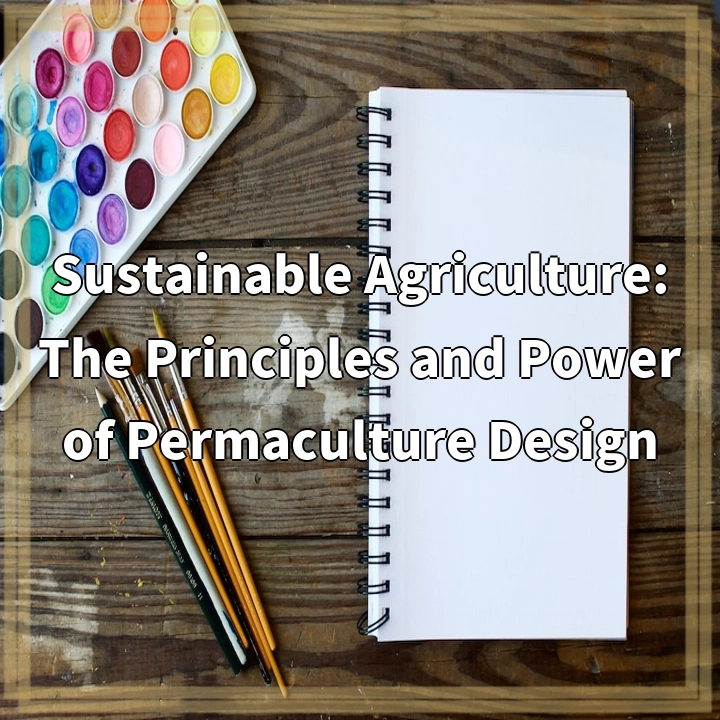Physical Address
304 North Cardinal St.
Dorchester Center, MA 02124
Physical Address
304 North Cardinal St.
Dorchester Center, MA 02124

Permaculture Design is an innovative and sustainable approach to agriculture that mimics the patterns and processes found in natural ecosystems. It aims to create regenerative and self-sustaining food production systems, offering solutions to the challenges faced by conventional farming practices.
Despite its potential, Permaculture Design faces certain challenges in real-world implementation:
One of the major problems with Permaculture Design is the lack of awareness and understanding among the general public, policymakers, and even within the agricultural community. Many people are unaware of its principles and potential benefits, making it difficult to gain widespread support and adoption.
Traditional farming practices and industrial agriculture have long dominated the agricultural sector. Implementing permaculture principles requires a shift away from conventional methods, which can be met with resistance from farmers, businesses, and even local communities who may be reluctant to embrace new approaches.
Securing land for permaculture projects can be a significant challenge. In many regions, land is scarce, and acquiring suitable plots for large-scale permaculture can be expensive or time-consuming. Limited access to land can hinder the expansion and scalability of permaculture systems.
Permaculture Design often faces regulatory challenges and policies that favor conventional agricultural practices. Outdated agricultural policies, zoning restrictions, and lack of incentives for sustainable practices make it difficult for permaculture farmers to navigate legal frameworks and can discourage their efforts.
Initial investments, such as infrastructure development and soil restoration, can be costly for permaculture projects. Limited financial resources, especially for small-scale farmers or community initiatives, can pose a significant barrier to the widespread adoption of permaculture principles.
Permaculture Design requires a diverse skill set and knowledge base, including ecological understanding, design principles, and practical implementation techniques. Providing accessible and comprehensive education and training opportunities is crucial to address the educational gaps and empower individuals to implement permaculture practices effectively.
Despite the challenges, there are several potential solutions to overcome these obstacles:
Creating educational campaigns and workshops to increase awareness about Permaculture Design can help address the limited understanding and knowledge gaps. Sharing success stories and case studies can inspire others to adopt these practices.
Advocating for policy reforms that support and incentivize sustainable agriculture practices is crucial. Encouraging governments to develop regulations that recognize and support permaculture farming can help overcome the policy and regulatory barriers.
Facilitating collaborations and networks among permaculture practitioners, farmers, researchers, and policymakers can strengthen the permaculture movement. Sharing resources, knowledge, and experiences can promote innovation and overcome challenges collectively.
Engaging local communities in the design and implementation of permaculture projects helps create a sense of ownership and fosters long-term commitment. Community gardens, educational programs, and participatory decision-making processes can encourage community involvement.
Efforts should be made to secure access to land for permaculture practitioners. This can involve advocating for land-use policies that allocate space for permaculture projects, supporting land trusts, or creating opportunities for land-sharing initiatives.
Providing financial support and resources to farmers and community initiatives can help overcome the financial barriers of implementing permaculture practices. Grants, loans, and crowdfunding platforms can be explored to fund infrastructure development and training programs.
Collaboration between permaculture practitioners and conventional farmers can help bridge the gap and create incremental change. Sharing knowledge, resources, and implementing permaculture principles on a smaller scale within conventional farming systems can lead to a gradual transition.
By implementing these solutions, we can pave the way towards a future where Permaculture Design is widely embraced and integrated into our agricultural systems. Overcoming the challenges requires collective effort, collaboration, and a commitment to creating a sustainable and regenerative future.
Permaculture Design offers sustainable and regenerative solutions to create resilient food systems. Let’s work together to address the challenges and promote the principles and power of Permaculture Design in sustainable agriculture.
If you’re wondering where the article came from!
#